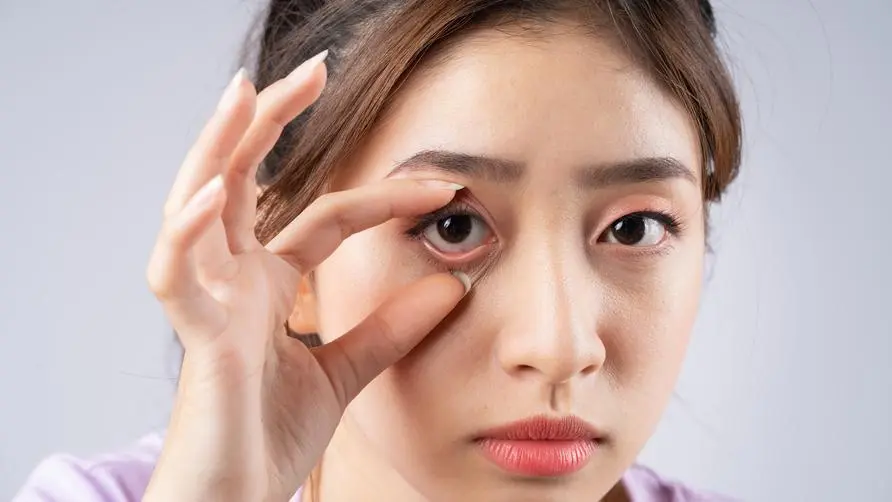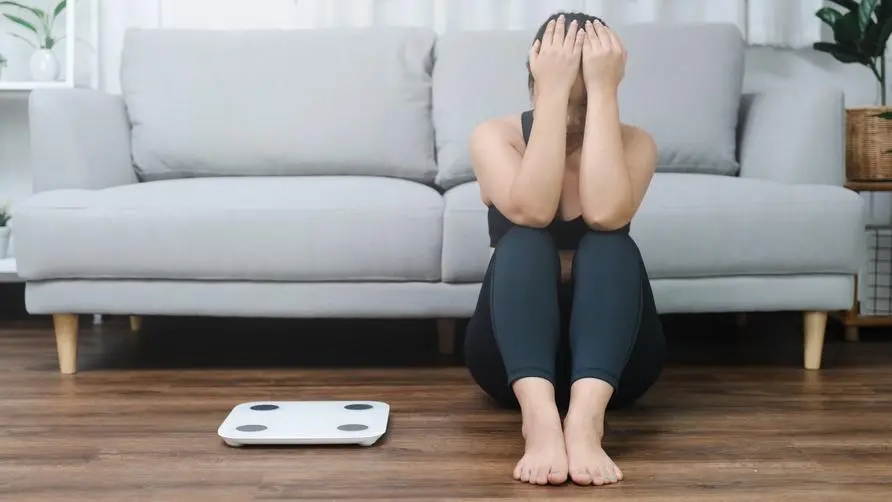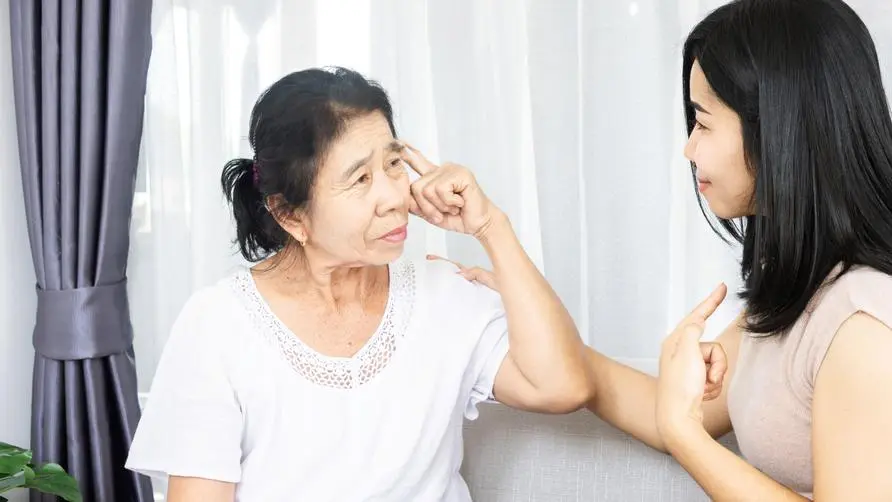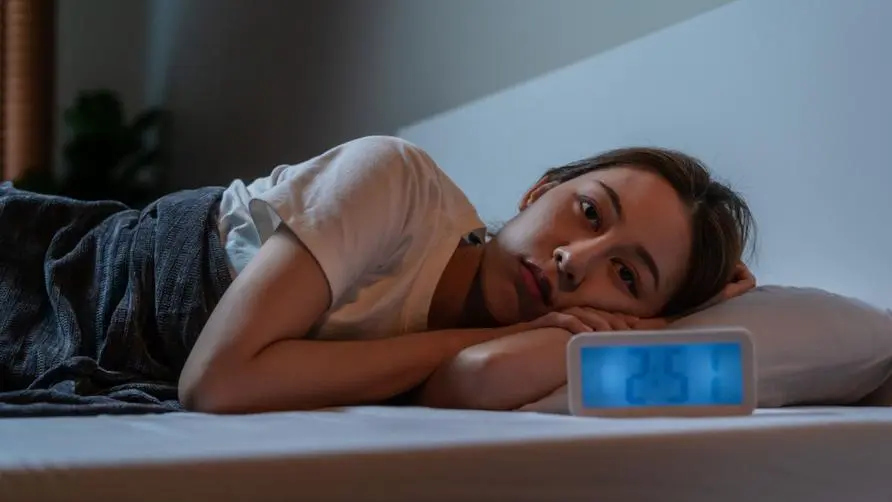Is the big and small eye actually a "brain tumor"? Is ptosis the only option for surgery? Expert: These two types of people are not suitable

Are the big and small eyes “droopy eyelids” or are there other reasons that prevent the eyes from opening?
Can’t open your eyes enough and feel like you have “big eyes” when taking pictures? Dr. Lai Chunsheng, professor of plastic surgery at Chung Ho Memorial Hospital of Kaohsiung Medical University, said that big and small eyes are medically called “blepharoptosis” and may be related to congenital or acquired factors. If the levator muscle is underdeveloped at birth, or caused by degeneration of the levator muscle later in life, it may also be caused by other diseases that damage the nerves that control the muscles, causing eyelid ptosis.
Dr. Lai Chunsheng explained that the main causes of eyelid drooping can be divided into 4 major categories. The first type is “myogenic”, which is caused by the development of the muscle itself or disease factors; the second type is “neurological”, which may cause the levator eye muscle to be unable to function when trauma or brain tumors compress the third pair of cranial nerves.
The third type is “fascial”. After the fascia of the levator eye muscle becomes thinned and degenerated, it can no longer be attached to the upper eyelid cartilage plate normally and effectively, making it impossible to lift the eyelids. The fourth type is “mechanical”, which is caused by external factors. Weight, such as upper eyelid tumors and eyelid swelling from excessive crying, may cause the eyes to be unable to open.
Drooping eyelids could be a brain tumor? People with bowed heads should beware of premature fascia degeneration
Dr. Lai Chunsheng said that there is another “mixed type” of eyelid ptosis, which means that 1 or 2 of the above 4 conditions may exist at the same time. Since the causes of eyelid ptosis are quite complicated, when eyelid ptosis occurs the day after tomorrow, it is necessary to find out the cause, conduct an eye muscle examination, and then decide on the treatment method. There was also a patient who sought medical attention for eyelid ptosis, only to be diagnosed with a brain tumor on the opposite side of the eyelid ptosis.
Modern people’s excessive use of 3C products may lead to drooping eyelids and big or small eyes in advance? Dr. Lai Chunsheng pointed out that the use of 3C products has indeed increased the incidence rate, especially eyelid ptosis related to fascial degeneration. In the past, most patients were over 60 years old, but now many patients come for treatment at around 45-50 years old. If the eyelids move downward for a long time, the fascia will easily become thinner. People with lowered heads are reminded to pay attention to the health of the eye muscles.
How to treat levator muscle weakness? Is the surgical method very different?
Dr. Lai Chunsheng pointed out that the treatment of eyelid ptosis is not the same for everyone. In addition to diagnosis by a doctor and finding out the root cause, the function of the eye levator muscle will also be tested. Under the effect of eliminating the compensatory upward contraction of the forehead muscle, the eyes will be lowered to the To evaluate the function of the levator muscle based on the upward looking distance, 12mm or more is considered good; 8-12mm is good; 5-7mm is fair; less than 4mm is very poor.
Most cases of ptosis will require surgical treatment. Dr. Lai Chunsheng explained that if the patient’s eye levator function is greater than 8mm, he or she only needs a simple folding eye levator surgery; if the patient’s eye levator function is between 5mm and 8mm, a shortening surgery will be performed to remove the excessively long eye levator muscle and then re- Fix and increase muscle contraction strength.
If the function of the levator eye muscle is seriously poor and is less than 5mm, you need to undergo “forehead suspension” surgery, which uses biological materials or your own orbicularis oculi muscle to fix one end to the cartilage plate and the other end to the forehead muscle, with the help of the forehead Muscle contraction to help the eyes open. Among them, the forehead-suspension “FOOM Flap” surgery is the first technique taught by Professor Lai Chunsheng. The difference between the two surgical methods is that the restoration of vision flap surgery uses “local materials” from the own muscle tissue, so there is no risk of rejection or infection, while foreign suspension materials have about 10% to 15% rejection or infection.
Myasthenia gravis can also cause big or small eyes! Postoperative care is more important than surgery
Some abnormal levator muscle functions are related to autoimmune diseases, such as myasthenia gravis, or genetic diseases of muscles and nerves. Dr. Lai Chunsheng explained that the characteristic of myasthenia gravis is that after a day of activity, fatigue-induced eyelid drooping will gradually occur, as well as double vision with blurred vision. Such patients must receive medical treatment. If eye muscle lift surgery is to be performed, they must be carefully evaluated and postoperative care must be paid attention to.
Dr. Lai Chunsheng said that in patients with severe myasthenia gravis, the eyes cannot move normally. If only eye lift surgery is performed, it is easy to cause inflammatory lesions of the conjunctiva and cornea because the eyelids cannot be covered. In the most severe cases, it may lead to blindness. Therefore, people with special diseases must consult a specialist for evaluation before undergoing eye lift-related surgery.
Dr. Lai Chunsheng pointed out that in the past, some kidney dialysis patients had eye inflammation after eye lift surgery. Although their visual field was significantly improved, they forgot to moisturize during kidney dialysis and caused eye inflammation. After undergoing eye muscle lift surgery, patients must pay attention to moisturizing the eyes. Generally, they will be given artificial tear gel, which can be applied to the face with plastic wrap while sleeping. This will not only moisturize the eyes but also prevent them from falling off.
The public is reminded that there are many causes of eye levator muscle weakness. When you find eyelid ptosis or eye problems, you should first see a doctor to check whether the cause is myogenic, neurological or fascial, and then decide on the treatment method after a doctor’s evaluation. If you have autoimmune diseases or muscle genetic diseases, you should receive appropriate treatment before deciding whether to undergo eye muscle lift surgery.
Further reading:





